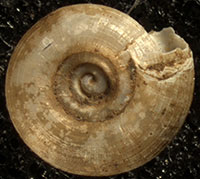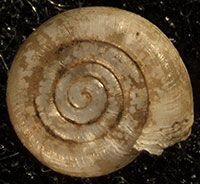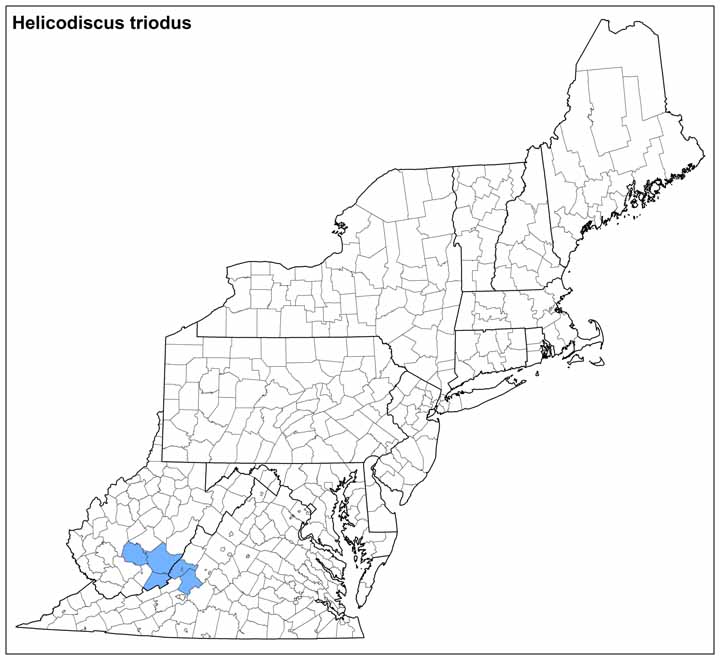Land Snails



Photo(s): Images of a Helicodiscus triodus shell, © Jeffrey C. Nekola. Note the small, plain parietal lamella.
Click photo(s) to enlarge.
Helicodiscus triodus (Hubricht, 1958)
Family: Helicodiscidae
Common name: Talus Coil
Identification
Width: 4.0-4.5 mm
Height: 1.5 mm
Whorls: 4+
Helicodiscus triodus has a flat, opaque, disk-shaped shell, sculptured with spiral lirae. On the nuclear whorl, these lirae are coarser than those of H. parallelus, and on the outer whorls they are finer, but more numerous. The open umbilicus is especially shallow, and about half the diameter of the entire shell.
Three or so pairs of teeth may be found on the outer and basal walls of the final whorl, with a single, flat-topped parietal tooth in front of each pair. The parietal tooth is not dished, as it is in H. diadema or H. lirellus. These teeth are seen in both juvenile and adult specimens.
Ecology
Helicodiscus triodus is found in calcium-rich environments, particularly at large outcrops on steep forested slopes, under limestone rubble and leaf litter; and in caves (Hotopp, pers obs.; Hubricht, 1985).
Taxonomy
There are no synonyms.
Distribution
This animal is known only from a handful of scattered places in Virginia, West Virginia, and North Carolina. In Virginia it is reported from three central-western counties. Its distribution appears to lie west of its congeners H. lirellus and H. diadema.
Conservation
NatureServe Global Rank: G2
NatureServe State Rank: Virginia, S1S2, Imperiled; West Virginia, SH, Historic
Virginia’s wildlife action plan: Tier II
Meegan Winslow, Ken Hotopp 11/2012
Range Map (click to enlarge)


